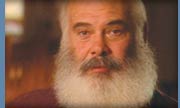
Date Description of Ellis Island Through History
1630 The Colonial governors of New Amsterdam purchased a small, 3.5-acre mud bank in Upper New York Bay, near the New Jersey shore. The Indians called it Kioshk, or Gull Island, after the birds that were its only inhabitants. The Dutch settlers called it "Oyster Island", after the many surrounding oyster beds. The Island barely rose above the surface at high tide.
1700s During the Colonial period, the Island was known as Dyre's; later it was called Bucking. In the 1760's, after some pirates were hanged from one of the island's scrubby trees, it became known as Gibbet Island.
1776 By the time of the American Revolution, the Island was owned by Samuel Ellis, a New York merchant and owner of a small tavern on the island catering to fishermen.
1808 Samuel Ellis's heirs sold the island to New York State. The name Ellis Island stuck. Later in the year, the Federal Government bought Ellis Island for $10,000.
1812 Shortly before the War of 1812, a battery of 20 guns, a magazine and a barracks were constructed on the island.
1834 By the terms of an interstate agreement, Ellis Island and neighboring Bedloe's Island (renamed Liberty island in 1956, site of the Statue of Liberty) were declared part of New York State, even though both islands are on the New Jersey side of the main ship channel. Ellis continued to serve as an arsenal until 1890. Nearby residents of Jersey City, Manhattan and Brooklyn worried for years about explosion of the powder magazines.
1890 The States turned over control of immigration to the Federal Government. The U.S. Congress appropriated $75,000 to build the first Federal immigration station on Ellis Island. Artesian wells were dug, and landfill (from incoming ships' ballast and New York City subway tunnels) doubled the size of Ellis to over six acres. While the new immigration station was under construction, the Barge Office on the Battery on the tip of Manhattan was used for immigration reception. During 1891, there were 405,664 immigrants, or about 80% of the national total, that were processed at the Barge Office.
01 Jan 1892 The First Ellis Island Immigration Station was officially opened. The first immigrant to pass through Ellis was a "rosy-cheeked Irish girl," Annie Moore, age 15, from County Cork. She came with her two younger brothers to join their parents in New York City. That first day, three large ships were waiting to land, and 700 immigrants passed through Ellis Island. In the first year, nearly 450,000 immigrants passed through the Island.
15 Jun 1897 A fire of undisclosed origin, possibly faulty wiring, completely destroyed the Georgia pine structures on Ellis Island. No one died, but most of the immigration records dating from 1855 were destroyed. In five years, some 1.5 million immigrants had been processed. While a new, fireproof immigration station was being constructed on Ellis, processing was transferred back to the Barge Office.
17 Dec 1900 The present Main Building, an impressive, French Renaissance structure in red brick with limestone trim was open. It cost some $1.5 million and was designed to process 5,000 immigrants per day. This was scarcely big enough for the surge in immigration in the pre-World War I years. The island was continuously enlarged with landfill, remodeling, additions and new construction.
1907 This was the peak year at Ellis Island with 1,004,756 immigrants received. The all-time daily high was on April 17th of this year when a total of 11,747 immigrants were processed.
1908 The Baggage and Dormitory Building was completed and capacity of the hospital was doubled. A dining room for 1,000 at a sitting was built on the top floor of the Kitchen and Laundry Building.
30 Jul 1916 Explosions believed set by German saboteurs at nearby Black Tom Wharf in New Jersey severely damaged the Ellis Island buildings. The most notable addition included in the repairs was the new ceiling over the Great Hall, a barrel vault constructed by the Guastavino brothers.
1917 When the U.S. entered the war in Europe, Ellis Island was used to detain crews from German merchant ships anchored in New York Harbor. Suspected enemy aliens throughout America were rounded up and brought to Ellis Island.
1918-19 The U.S. Army and Navy took over most of Ellis Island for use as a way station and treatment of returning sick and wounded American servicemen. During the war, there was a sharp decline in immigration as the numbers of newcomers passing through Ellis Island decreased from 178,416 in 1915, to just 28,867 in 1918.
1921 Post-war immigration quickly revived and 560,971 immigrants passed through Ellis Island in 1921. The first Immigration Quota Law passed the U.S. Congress, adding to the administration problems at Ellis Island. It provided that the number of any European nationality entering in a given year could not exceed three percent of foreign-born persons of that nationality who lived in the U.S. in 1910. Nationality was to be determined by country of birth, and no more than 20 percent of the annual quota of any nationality could be received in any given month. The total number of immigrants admissible under the system was set at nearly 358,000, but numerous classes were exempt.
1924 The Immigration Act of 1924 further restricted immigration, changing the quota basis from the census of 1910 to that of 1890, and reducing the annual quota to some 164,000. This marked the end of mass immigration to America. The Immigration Act also provided for the examination and qualification of immigrants at U.S. consulates overseas. The main function of Ellis Island changed from that of an immigrant processing station, to a center of the assembly, detention, and deportation of aliens who had entered the U.S. illegally or had violated the terms of admittance. The buildings at Ellis Island began to fall into disuse and disrepair.
1930s Funds from the Public Works Administration permitted the landfill addition of recreation grounds on the Manhattan side of the Main Building. Works Progress Administration (WPA) labor added landscaping, new playgrounds and gardens on new landfill between Units 2 and 3. As a result of these efforts, Ellis Island reached its present 27.5 acres
1938-1945 During World War II, Ellis Island facilities were used by the Coast Guard to house and train recruits. After the U.S. entered the war in December 1941, Ellis Island was again used as a detention center for suspected enemy aliens and as a hospital for returning wounded servicemen. The detainees became so numerous that the immigration functions had to be transferred to Manhattan for lack of room on Ellis.
1946 Following the decommissioning of the Coast Guard Station, Ellis Island remained in use primarily as a detention center for aliens whose status was questioned.
1950 A brief flurry of activity occurred on Ellis Island after the passage of the Internal Security Act of 1950, which excluded arriving aliens who had been members of Communist and Fascist organizations. Remodeling and repairs were performed on the buildings to accommodate detainees who numbered as many as 1,500 at one time.
1952 As a result of the Immigration and Naturalization Act of 1952 and a liberalized detention policy, the number of detainees on Ellis Island dropped to less than 30.
Nov 1954 Ellis Island, with its 33 structures, was closed and declared excess Federal property.
1954-65 Ellis Island was under jurisdiction of the General Services Administration.
11 May 1965 President Lyndon B. Johnson issued Proclamation 3656 adding Ellis Island to the Statue of Liberty National Monument, thus placing Ellis Island under the jurisdiction of the National Park Service.
1976 Ellis Island was opened to the public for visits. Sixty-minute guided tours were limited to the Main Building. Over 50,000 visited the island in 1976.
1984 Visitation had reached 70,000 per year when the current restoration began. The non-profit Statue of Liberty-Ellis Island Foundation, Inc., chaired by Lee A. Iacocca, raised all the funds from private citizens, corporations and other groups. In collaboration with the National Park Service, it also lets contracts for the work.
Ellis Island Information





 Attempting to do too much too fast is worse than doing nothing at all! Because then you feel like exercise is too hard and it's just not for you.
Attempting to do too much too fast is worse than doing nothing at all! Because then you feel like exercise is too hard and it's just not for you. 
